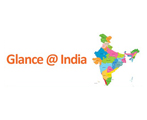Embassy of India
Tokyo
Address by H.E. Mr. Sujan R. Chinoy,
Hon'ble Ambassador of India to Japan
Tokamachi Snow Festival
Friday, 19 February 2016 at 1400 hours
At Forum Centre, Belnatio, Tokamachi
Mr. Yoshifumi Sekiguchi, Hon'ble Mayor, Tokamachi City
Mr. Tokio Hasegawa, Director, Mithila Museum,
Ladies & Gentlemen :
I would like to begin by conveying my grateful thanks to Hasegawa-San for inviting me to Niigata Prefecture to attend the annual Tokamachi Snow Festival. Shortly after my arrival in Tokyo in December last year, I had the pleasure of meeting him. In fact, I can say that he was one of the first Japanese friends to greet me in my office. I had heard much about his relentless efforts to promote India-Japan cultural relations but little did I know that he was also someone who had imbibed Indian culture over the years to such an extent that he could sing some traditional Indian songs as well!
- As you all know, Hasegawa-San founded the Mithila Museum 34 years ago. It has a fine collection of Indian paintings and terracotta statues and figures, exhibited on a permanent basis. The core of the terracotta collection is the 109-piece donation made in 1989 by the Government of India. The Mithila art collection, which was created to promote a unique art form of India, is acclaimed by the Government of India for its breadth and quality.
- No amount of praise will adequately do justice to Hasegawa-San's good work. He has been organizing the Namaste India event every year, to showcase Indian dance, music, food, tourism, handicrafts in Tokyo for the past 20 years. The event held in 2015 saw the participation of an ICCR dance troupe from the Natraj Kala Mandir and there were about 20,000 visitors over two days. Hasegawa-San also helped the Embassy in organizing the Artist in Residence programme along with Telangana Art Trust in August 2015 and the Exhibition of Buddhist sculptures from Kolkata National Museum at the Tokyo National Museum in March-May 2015. This year, he is facilitating the tour of the Manipuri Dance troupe which is performing in the Tokamachi Snow Festival, Tokyo and Okinawa. Besides, he organized the participation of 33 performers and artisans from Japan in the recent SurajkundKundMela. I should therefore thank him again for all that he is doing to promote our cultural exchanges.
- On January 8 this year I met His Excellency Mr. HirohikoIzumida, the Governor of Niigata Prefecture, at a New Year event organized by him, and after listening to his introduction I had decided to visit this place at the earliest. So here I am, looking forward to learning more about your beautiful prefecture's culture, economy, cuisine and traditions, and of course, to experience the delights of the famous Tokamachi Snow Festival.
- I have been asked to make a brief presentation on India-Japan relations. I think it would be appropriate to preface my comments with a brief introduction to my country, India.
- As you all know, India is one of the world's oldest civilisations, which gave rise to ancient religions such as Hinduism, Jainism and Buddhism. In fact, India is home to other religions, including Christianity, Judaism, Islam and Sikhism. Buddhism spread from India to East Asia, and reached Japan both directly as well as through the medium of China. Ancient India was well-versed in science, astronomy, medicine and many other fields. The concept of ‘zero' and the decimal system were products of Indian genius. India gave to the world the values of peace, non-violence and co-existence. Over past millennia, many a conqueror coveted the riches of India but none could conquer Indian culture, traditions or philosophy. Even those that came with a sword were soon assimilated into India's composite and inclusive culture. History is also replete with examples of India giving refuge to those fleeing persecution in their own lands.
- We take pride in our unity in diversity.
- India is the world's seventh-largest country. It has 1.2 billion people, of which 600 million are below the age of 25 years. During the 17th century, India was one of the richest countries in the world, before the colonial yoke and exploitation enfeebled her. Since independence in 1947, India has made notable achievements in diverse fields, including atomic energy, space science, agriculture, bio-technology and, of course, information technology, for which India and Indians are well-known the world over.
- India today is the world's fastest-growing large economy. It is expected to grow at 7.5 per cent during the current financial year, and is poised to grow at even faster rates at a time when traditional engines of global growth have faltered, including in the Asia-Pacific region. India'sGDP is already the third-largest in the world in terms of Purchasing Power Parity (PPP). India will soon overtake China as the most populous country in the world.India has abundant human resources and a youthful labour force just as others, including China, grapple with an aging population and labour shortages. India is the only one among the BRICS nations that is expected by Goldman Sachs to maintain a steady growth rate of well-over 5 per cent right up to the middle of the century, making it then the world's second-largest economy in nominal terms as well.
- Under the dynamic leadership of Prime Minister Narendra Modi, India is making rapid progress in diverse sectors. India has an open business environment with a “red carpet” for entrepreneurs and investors. The Indian economy offers unique advantages of a huge domestic market, plentiful human resources at lower cost, and, democracy and the rule of law.
- It is against this backdrop that I wish to say a few words about our bilateral ties. India has now emerged as an attractive destination for global investment, and as a hub for global manufacturing and services. There is great scope for Japanese companies to enhance their global competitiveness and profitability by participating in the ‘Make in India', Smart Cities, Digital India and several other programmes. Japan is already participating in the mega schemes such as the Dedicated Freight Corridor, the Delhi Mumbai Industrial Corridor, the Ahmedabad and Chennai metros and in 12 industrial townships. In fact, the latest JBIC report once again identifies India as the most favoured destination for overseas investment in the medium term.Japanese investments in India are on the rise and set to grow. Just imagine the mutual benefit that we could reap if we could combine Japan's technology, manufacturing prowess and innovation with India's skills and rich human resources.
- I should say a few words about our friendship and deep cultural bonds that are age-old. Our ties are deeply rooted in our spiritual affinity and the common heritage of Buddhism. Despite the great geographical distance between us, there were many exchanges in past centuries, the most important of which is the arrival from India in 752 AD of the Buddhist monk Bodhisena for the eye-opening ceremony of the great Buddha statue of Todaiji in Nara. Bodhidharma, who founded Zen Buddhism in China, was an Indian monk, known in Japan as Daruma. Our cultural similarities extend to Shintoism, which shares three of its seven lucky Gods with India. These are Benzaiten (Saraswati), Daikokuten (Shiva) and Bishamonten (Kubera). Other Hindu Gods and Goddesses such as Ganesh (Shoten) and Laxmi (Daibenkudoku-ten) are also present in Japan. The great genius of Japan, Kukoi or Kobotaishi, brought the Lotus Sutras of Buddhism from Xian in China and along with it also the Indian Siddham letters called Shittam in Japanese. The HiraganaandKatagana phonetic scripts are very akin to the Sanskrit alphabet. There is similarity in our grammatical syntax. There is similarity in our musical instruments such as the Indian Veena and the Japanese Biwa, and in our sculptures, as a result of the Buddhist influence.
- Today, we have an equally strong convergence in our strategic outlook and our economic future as well.
- As Prime Minister Modi said during Prime Minister Abe's recent visit to India in December 2015, one cannot think of a strategic partnership that can exercise a more profound influence on shaping the course of Asia and our interlinked ocean regions than ours. No partner has played such a decisive role in India's economic transformation as Japan. No friend will matter more in realizing India's economic dreams than Japan. There exists unmatched public goodwill and political consensus in India for our Special Strategic and Global Partnership. The Memorandum we signed on Civil Nuclear Energy Cooperation is a shining symbol of a new level of mutual confidence and strategic partnership in the cause of a peaceful and secure world. No less historic is our decision to introduce the High Speed Rail, Shinkansen, known for its speed, reliability and safety, on the Mumbai-Ahmedabad sector.
- The announcement by Prime Minister Modi of India of “visa on arrival” scheme for all Japanese travellers, including visitors on business, from 1 March 2016, will further promote engagement at all levels.
- The year 2015 was very active and productive for our bilateral relations. We have seen the surge in bilateral exchanges, including railways, defence and science & technology. The growing cooperation between prefectures such as Kyoto, Toyama and Hyogo with states in India is a very welcome and mutually beneficial.
- The year 2016 is already off to a good start, with back-to-back visits by the Minister of State for Power, Coal, New & Renewable Energy of India for the 8th Round of the Energy Dialogue and that of the Chief Minister of the Indian state of Haryana to explore business and investments tie-ups. Our cultural linkages remain robust, with the Minister of State for Home (Interior) participating in the second meeting of the jointly initiated SamvadConference on ‘Shared Values and Democracy in Asia' in Tokyo this month. The rest of this year's calendar promises to be busy. It augurs well for the future.
- As Prime Minister Abe himself has said, ours is a relationship with the greatest potential of all.
- I look forward to working closely with the friendly people of Japan to promote friendship and cooperation between India and Japan.


























